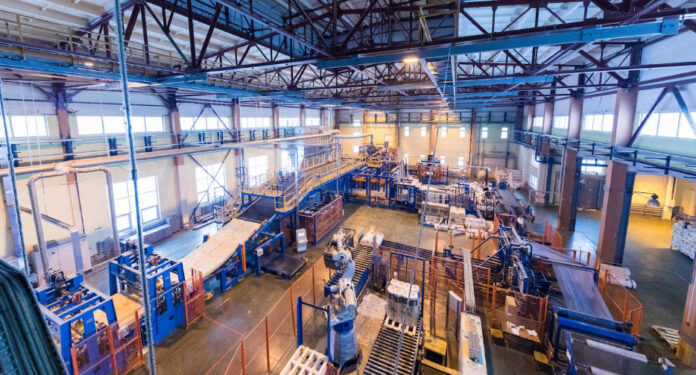How Precise Can the Cutting Machine Machine Cutting Accuracy Be?
The cutting machine machine has become an essential tool in various industries, ranging from manufacturing to construction. One of the most critical factors when considering the use of a cutting machine is its cutting accuracy. Precision in cutting can greatly impact the quality, efficiency, and overall performance of operations. But how precise can the cutting machine really be? Cutting accuracy is typically measured in millimeters, and the extent to which a machine can achieve this precision depends on several factors, including the type of cutting machine, its design, and the technology used. In this article, we will explore the cutting accuracy of cutting machines, the factors that influence it, and how businesses can leverage these machines to enhance their operations.
Understanding Cutting Machine Accuracy
Cutting accuracy refers to the ability of a cutting machine to produce parts or products with dimensions that closely match the intended specifications. The precision of the machine is typically expressed in millimeters (mm), and it indicates the allowable deviation from the desired cut. For example, a cutting machine with an accuracy of 0.1 mm means the actual cut can vary by no more than 0.1 mm from the target dimension. This level of precision is crucial in industries where even slight inaccuracies can result in defective products, costly rework, or safety hazards.
Factors Affecting Cutting Machine Accuracy
Several factors contribute to the overall accuracy of a cutting machine. These factors must be considered to ensure optimal performance and achieve the desired cutting precision.
1. Type of Cutting Machine
The cutting machine’s type plays a significant role in determining its cutting accuracy. Common types of cutting machines include laser cutting machines, CNC (Computer Numerical Control) machines, water jet cutting machines, and plasma cutting machines. Each of these machines has its own level of precision based on their working principles and the technologies involved.
Laser cutting machines, for instance, are known for their high precision and can achieve cutting accuracies as small as 0.01 mm. This makes them ideal for tasks requiring intricate cuts, such as in electronics manufacturing or medical device production. On the other hand, water jet cutting machines are typically less precise than laser cutters but are still capable of achieving accuracies in the range of 0.1 mm to 0.5 mm, depending on the material and machine used.
2. Material Being Cut
The material being cut also affects the cutting accuracy. Different materials have varying properties that can influence how a cutting machine performs. For example, materials such as metal, plastic, and ceramics have different thermal and structural characteristics that can impact the precision of the cut. In metals, heat distortion may occur during the cutting process, which can lead to slight variations in the cut’s accuracy. Similarly, when cutting soft materials like plastic, the cutting machine may encounter less resistance, allowing for more precise cuts.
3. Machine Calibration
Machine calibration is another critical factor that affects cutting accuracy. Over time, cutting machines can experience wear and tear, leading to slight misalignments or inaccuracies in cutting. Regular calibration and maintenance are essential to ensure that the machine operates within the desired tolerance range. Well-maintained machines will provide more consistent results and maintain higher cutting accuracy. Calibration also involves adjusting the machine’s settings, such as feed rate, speed, and cutting pressure, to ensure optimal performance for the specific material being cut.
4. Operator Skill
The skill and experience of the operator can significantly influence cutting accuracy. Operators who are well-trained and knowledgeable about the machine’s capabilities are more likely to achieve higher precision. Proper programming of CNC machines, for example, requires understanding the correct parameters for cutting, as well as the characteristics of the material. An experienced operator can adjust these parameters to maximize cutting accuracy and ensure that the machine operates within its optimal range.
5. Environmental Factors
Environmental factors can also play a role in determining cutting accuracy. Factors such as temperature, humidity, and vibration can affect the performance of the cutting machine. For example, temperature fluctuations may cause the material to expand or contract, leading to slight variations in the cut. Similarly, vibrations in the environment can affect the machine’s ability to maintain precision. Ensuring a stable, controlled environment can help mitigate these factors and improve cutting accuracy.
Applications of High Precision Cutting Machines
High precision cutting machines are used in a variety of industries where accuracy is crucial for the production of high-quality products. Some of the key applications include:
1. Aerospace Industry
In the aerospace industry, precision cutting is essential for producing components that must adhere to strict safety standards. Cutting machines with high accuracy are used to produce intricate parts for aircraft, such as turbine blades, engine components, and structural elements. These components must be cut to precise specifications to ensure proper fit, functionality, and safety.
2. Automotive Industry
The automotive industry also requires cutting machines with high precision to manufacture parts that meet stringent quality and performance standards. High-precision cuts are necessary for producing parts such as engine components, transmission systems, and body panels. Accurate cuts ensure that these parts fit together seamlessly, minimizing the risk of defects and improving overall vehicle performance.
3. Medical Devices
The medical device industry relies heavily on high precision cutting machines to produce components for devices such as surgical instruments, implants, and diagnostic equipment. Precision is crucial in ensuring the safety and functionality of medical devices. A small error in the cutting process could lead to malfunctions or complications in the device’s operation, potentially putting patients’ lives at risk.
4. Electronics Manufacturing
In electronics manufacturing, cutting machines are used to create intricate cuts in materials such as silicon, printed circuit boards (PCBs), and semiconductor wafers. High cutting accuracy ensures that components fit together correctly, enabling the production of reliable and efficient electronic devices. Even a slight deviation from the desired specifications can lead to performance issues in the final product.
How to Maximize Cutting Accuracy
To maximize cutting accuracy, businesses should consider several strategies:
1. Invest in High-Quality Machines
Investing in cutting machines with high precision capabilities is essential for businesses that require accuracy in their operations. Machines with advanced technologies, such as laser cutting or CNC, can achieve higher precision levels compared to traditional cutting methods.
2. Regular Maintenance and Calibration
As mentioned earlier, regular maintenance and calibration are crucial for maintaining cutting accuracy. Businesses should establish a maintenance schedule to ensure that their cutting machines remain in optimal condition. This will help prevent inaccuracies caused by machine wear and ensure consistent performance.
3. Proper Operator Training
Training operators on how to use cutting machines effectively can significantly improve cutting accuracy. Operators should be familiar with the machine’s capabilities and limitations, as well as the best practices for cutting different materials. Proper training ensures that operators can adjust settings and parameters to achieve the best possible results.
Conclusion
The cutting accuracy of a cutting machine is a critical factor in ensuring the quality of products and the efficiency of manufacturing processes. While different machines offer varying levels of precision, cutting machines can generally achieve accuracy ranging from 0.1 mm to as precise as 0.01 mm, depending on the technology used. Businesses looking to maximize cutting accuracy should invest in high-quality machines, conduct regular maintenance, and ensure operators are well-trained. With the right approach, cutting machines can greatly enhance operational efficiency and product quality, meeting the demands of industries that rely on precision manufacturing.





